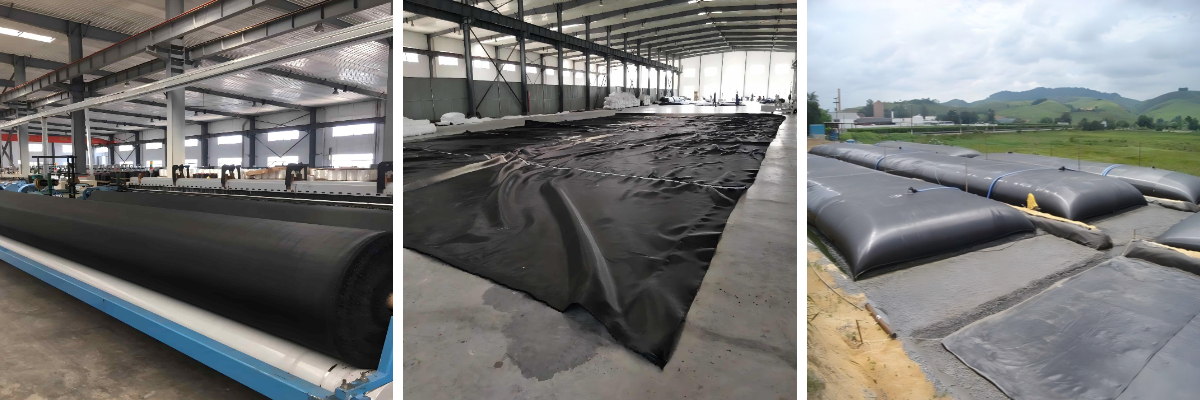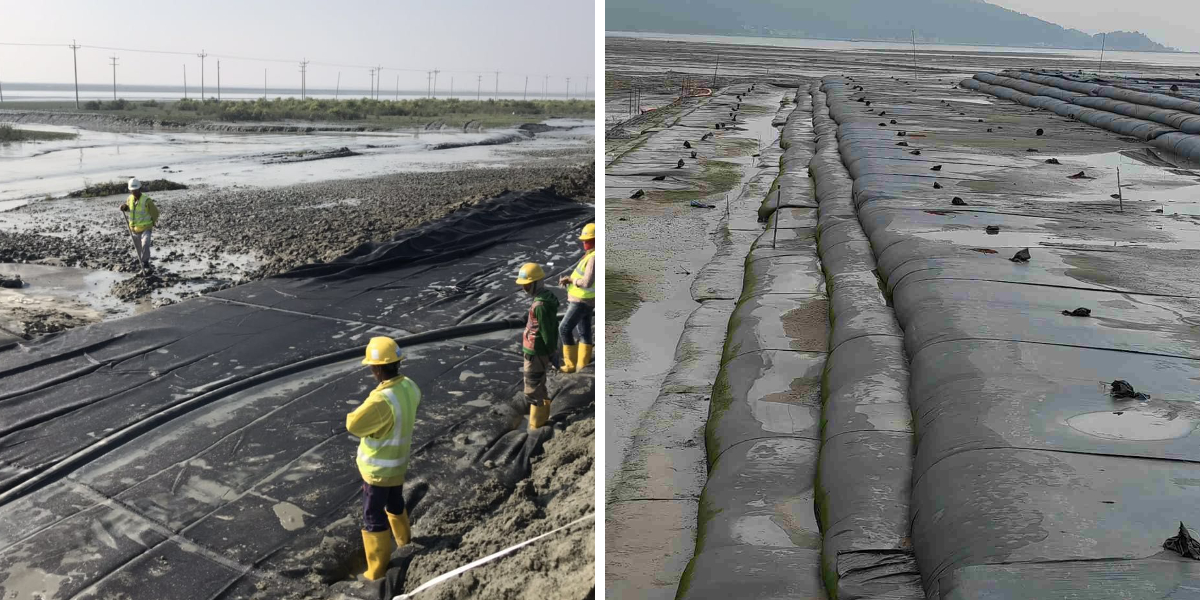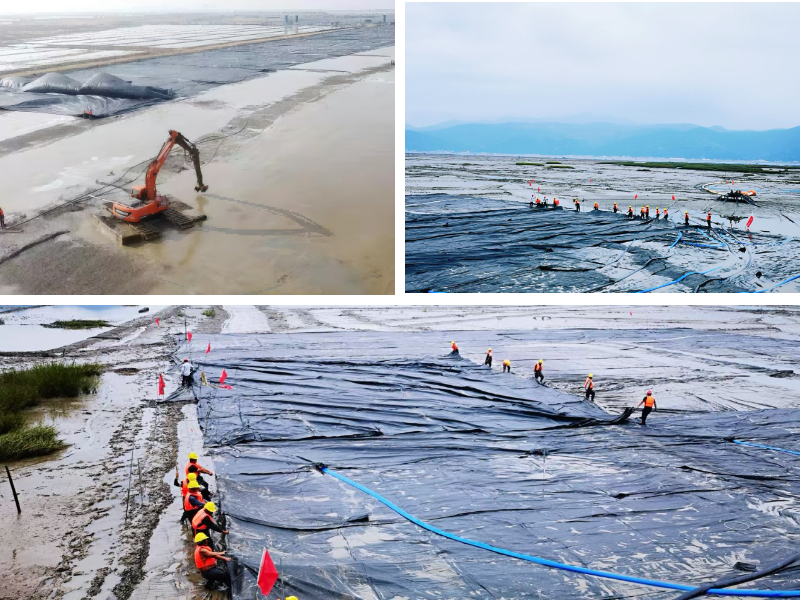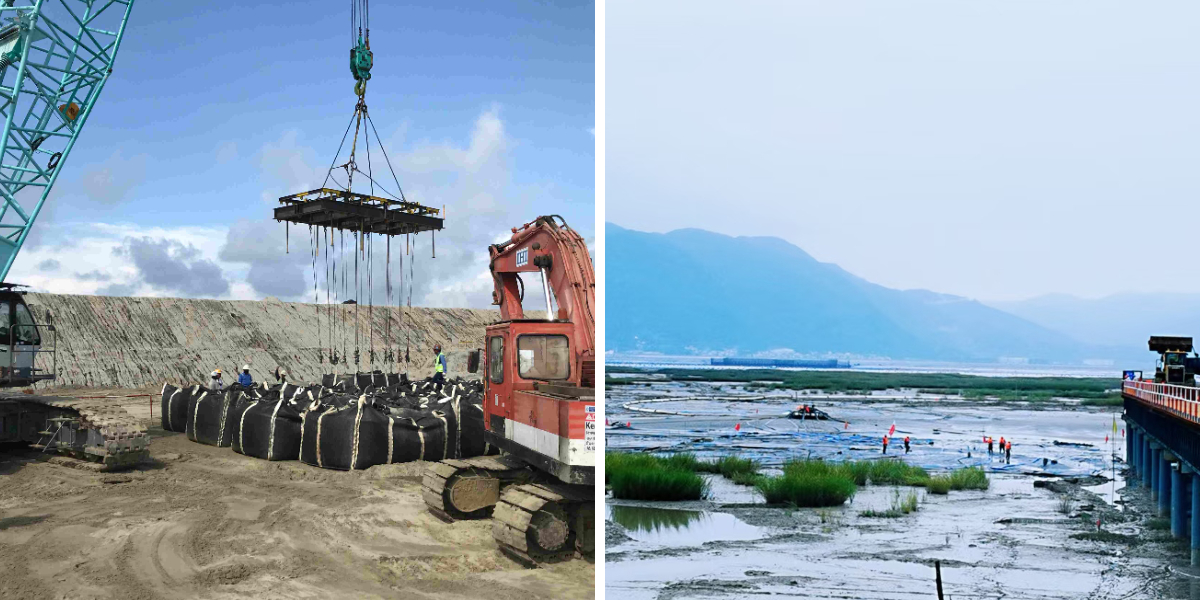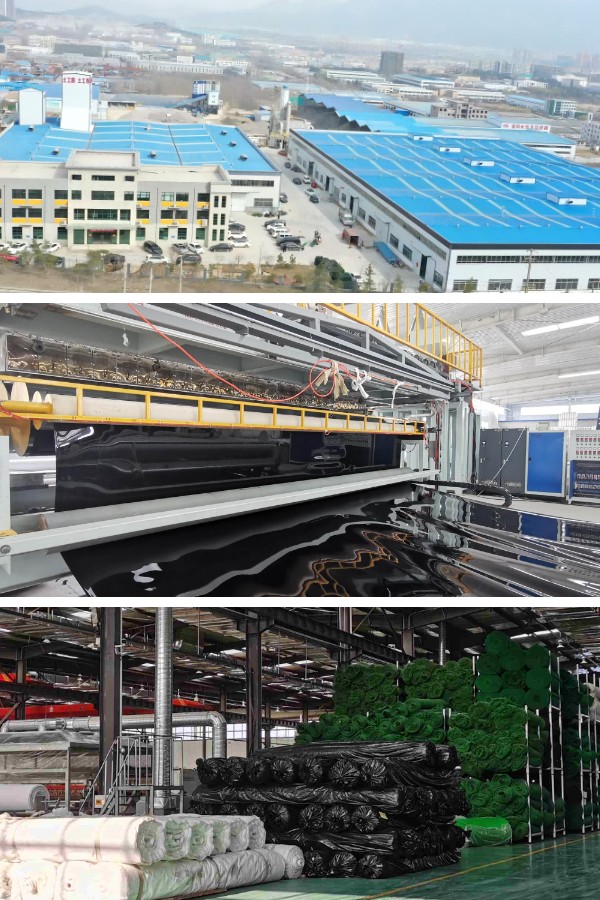Dewatering Bags for Environmental Remediation Projects
Environmental remediation projects—from cleansing up contaminated soil and water to restoring polluted wetlands—require options that stability efficiency, safety, and ecological responsibility. Dewatering Bags have emerged as a fundamental device in this field, presenting a budget friendly and sustainable way to separate water from solids, control sludge, and minimize waste volume. Unlike typical dewatering techniques that may also disrupt ecosystems or generate hazardous byproducts, these specialised luggage furnish managed filtration whilst minimizing environmental impact. This information explores how Dewatering Bags decorate environmental remediation efforts, their special advantages, and their function alongside complementary options like Land Reclamation Geotextile Bags and Erosion Control Tubes. By the end, you’ll apprehend why dewatering luggage are a go-to desire for remediation specialists aiming to fix web sites whilst adhering to strict environmental standards.
The Role of Dewatering in Environmental Remediation
Environmental remediation frequently includes dealing with massive volumes of waterlogged or contaminated materials—such as sludge from polluted lakes, sediment from industrial sites, or wastewater from cleanup operations. Excess water in these substances complicates disposal, will increase transportation costs, and can extend mission timelines. More critically, water can elevate contaminants (like heavy metals or chemicals) into surrounding soil or waterways, undoing remediation progress.
Dewatering Bags tackle these challenges via effectively setting apart water from solids. The baggage use permeable geotextile material to lure contaminated solids whilst permitting smooth water to drain—either for reuse in the mission or protected discharge. This now not solely reduces the extent of waste wanting disposal however additionally prevents contaminants from spreading. In many cases, the dewatered solids can even be handled similarly or repurposed, aligning with the round financial system desires of present day remediation projects.
Key Advantages of Dewatering Bags for Remediation
Dewatering Bags provide awesome advantages that make them perfect for environmental remediation, the place precision and sustainability are paramount:
1. Controlled Filtration and Containment
Remediation tasks demand strict manipulate over contaminants, and Dewatering Bags supply by way of trapping even exceptional particles (down to microns) in their geotextile fabric. This prevents pollutants from leaching into the surroundings at some stage in dewatering. For example, when treating sludge from a former industrial site, the luggage maintain heavy metal-laden solids, making sure solely filtered water—meeting regulatory standards—drains out. This stage of containment is a ways greater dependable than open-pit dewatering, which dangers runoff and contamination.
2. Portability and Flexibility
Remediation websites are frequently remote, uneven, or constrained in space. Dewatering Bags are lightweight, foldable, and convenient to transport—even to hard-to-reach areas. They can be deployed rapidly except heavy equipment, adapting to web page constraints (e.g., slim wetlands or steep slopes). This flexibility is a most important benefit over inflexible dewatering systems, which require full-size setup and may additionally harm touchy ecosystems.
3. Cost-Effectiveness
By lowering waste volume, Dewatering Bags decrease transportation and disposal costs—significant costs in remediation projects. They additionally remove the want for highly-priced infrastructure like concrete tanks or mechanical dewatering equipment. Additionally, their reusability (many baggage can be cleaned and repurposed for more than one projects) in addition reduces long-term costs, making them a budget-friendly desire for each small-scale and large-scale remediation efforts.
Complementary Solutions: Land Reclamation Geotextile Bags and Erosion Control Tubes
While Dewatering Bags excel at solids-liquid separation, environmental remediation frequently requires a holistic approach. Land Reclamation Geotextile Bags and Erosion Control Tubes work alongside dewatering luggage to tackle associated challenges, growing a complete remediation system.
Land Reclamation Geotextile Bags
Land Reclamation Geotextile Bags are large, heavy-duty baggage designed to repurpose dewatered solids for land restoration. After Dewatering Bags separate solids from water, the dewatered fabric (e.g., cleaned sediment) is positioned into these geotextile baggage to construct up land—such as restoring coastal areas eroded with the aid of air pollution or growing secure floor for vegetation. The baggage are permeable but strong, permitting water to drain whilst conserving the solids, and they withstand UV radiation and chemical degradation. This turns waste into a resource, lowering the want for landfill disposal and advancing land reclamation goals.
Erosion Control Tubes
Erosion Control Tubes (also referred to as geotubes) are cylindrical constructions used to stabilize remediation websites and forestall erosion at some stage in and after cleanup. They are crammed with sediment or dewatered solids, growing obstacles that sluggish water runoff and defend soil from washing away. For example, after the use of Dewatering Bags to deal with sludge from a river cleanup, Erosion Control Tubes can be positioned alongside the riverbank to strengthen the soil, stopping re-contamination and aiding vegetation growth. Their massive dimension and excessive tensile electricity make them best for stabilizing slopes, shorelines, and different prone areas in remediation sites.
Real-World Applications of Dewatering Bags in Remediation
Dewatering Bags are used in a broad vary of environmental remediation projects, proving their versatility and effectiveness:
1. Contaminated Soil Remediation
In tasks the place soil is contaminated with oil, chemicals, or heavy metals, Dewatering Bags deal with waterlogged soil by way of eliminating extra moisture. This makes the soil less difficult to excavate, deal with (e.g., by way of bioremediation), and reuse. The baggage entice contaminated solids, making sure pollution don’t unfold at some point of the process.
2. Wastewater Treatment in Industrial Remediation
Former industrial web sites frequently have wastewater containing solvents, dyes, or heavy metals. Dewatering Bags filter this wastewater, setting apart contaminated sludge from smooth water. The filtered water can be reused for cleansing or discharged safely, whilst the sludge is disposed of or handled further.
3. Wetland and Lake Restoration
Polluted wetlands and lakes accumulate nutrient-rich sludge that harms aquatic life. Dewatering Bags eliminate this sludge, dewater it, and the ensuing solids are positioned into Land Reclamation Geotextile Bags to fix wetland habitats. Erosion Control Tubes are then used to stabilize the area, promotion the boom of native vegetation and wildlife.
Best Practices for Using Dewatering Bags in Remediation
To maximize the effectiveness of Dewatering Bags in environmental remediation, observe these high-quality practices:
Match Bag Size to Project Needs: Choose luggage of fabulous extent primarily based on the quantity of cloth to be dewatered—too-small luggage will require common replacement, whilst too-large luggage may also be tough to handle.
Select the Right Geotextile Fabric: Opt for material with pore dimension tailor-made to the particle measurement of the cloth (e.g., finer mesh for silt, coarser mesh for sand) to make sure greatest filtration.
Monitor Drainage Water Quality: Regularly take a look at the water draining from the luggage to make certain it meets regulatory standards, adjusting the gadget if needed.
Coordinate with Complementary Solutions: Integrate Dewatering Bags with Land Reclamation Geotextile Bags and Erosion Control Tubes to create a seamless remediation process.
Conclusion: Dewatering Bags—A Cornerstone of Sustainable Remediation
Dewatering Bags are extra than simply a dewatering tool—they are a cornerstone of sustainable environmental remediation. Their capacity to manage filtration, minimize waste, and work alongside Land Reclamation Geotextile Bags and Erosion Control Tubes makes them necessary for restoring polluted web sites whilst defending ecosystems.
In an technology the place environmental duty is non-negotiable, Dewatering Bags provide a way to stability remediation effectivity with ecological care. They minimize costs, decrease environmental disruption, and flip waste into a resource—aligning with the desires of present day remediation projects. Whether you’re cleansing up an industrial site, restoring a wetland, or treating contaminated soil, dewatering luggage furnish a reliable, sustainable answer that helps heal the planet one assignment at a time.
Contact Us
Company Name: Shandong Chuangwei New Materials Co., LTD
Contact Person :Jaden Sylvan
Contact Number :+86 19305485668
WhatsApp:+86 19305485668
Enterprise Email: cggeosynthetics@gmail.com
Enterprise Address: Entrepreneurship Park, Dayue District, Tai 'an City,
Shandong Province


